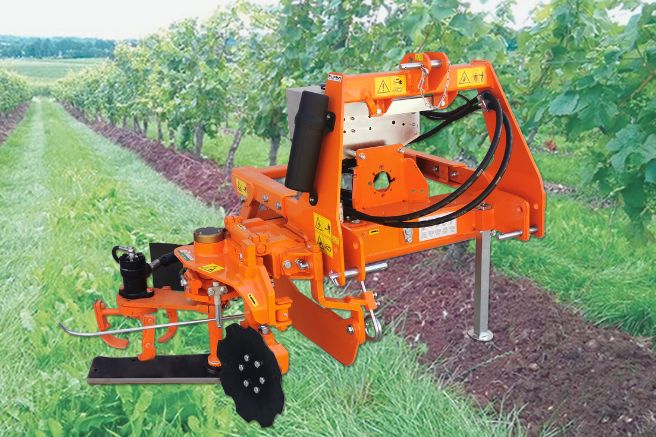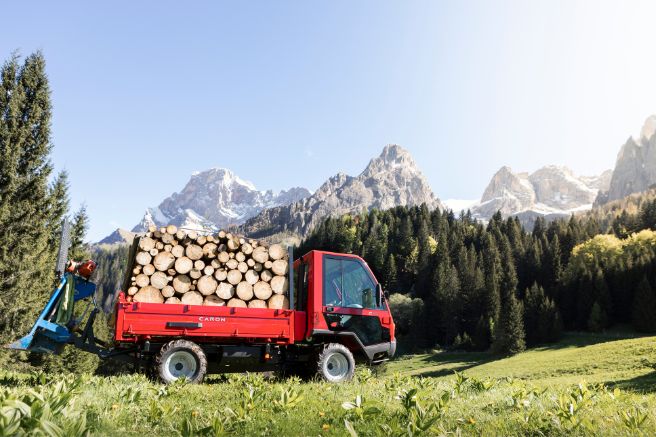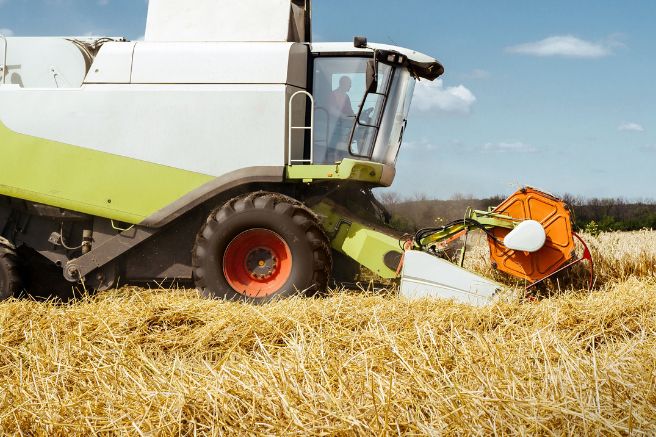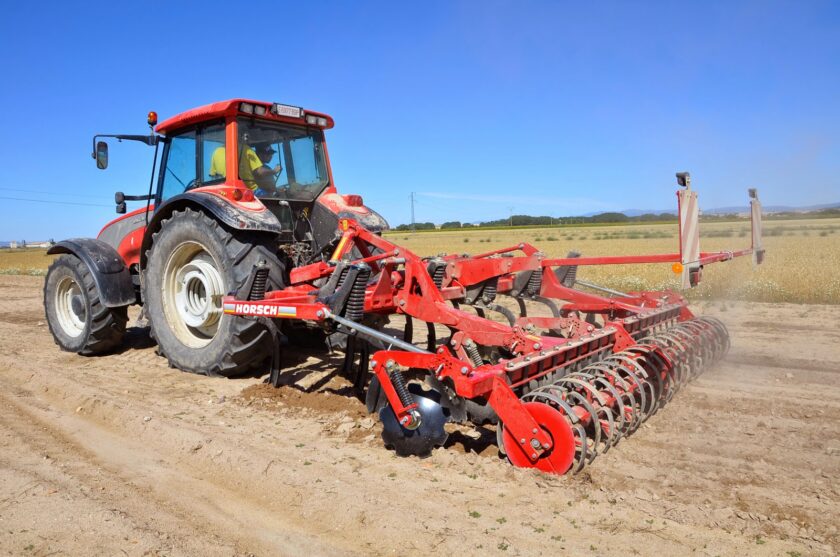
Although they are highly sustainable practices, no-till seeding and minimum tillage still cover a minority of agricultural land in Italy. Deep tillage can still make sense in many field situations, especially in livestock-intensive provinces where plowing is necessary to incorporate the generous availability of manure, slurry, and digestate.
Horsch “Terrano” cultivators: Aaligned with CAP guidelines
Even on these farms, however, conservation agriculture can be useful in specific situations, such as when proceeding with second sowings after the mowing of autumn-winter cereals. From mid-May onwards, practices of chopping barley and triticale begin, which are harvested at the milky-waxy stage for ensiling. Therefore, before sowing cereals again in the autumn, there are at least four and a half months in which the fields can be used to grow something else, usually maize or soybeans. In this case, hybrids of maize Class Fao 400 or 500, with production cycles ranging from three to four months, are well suited for the second sowings. Alternatively, soybean varieties of groups “0+” and “1-“, with short or medium-short cycles, although in the North-East, group “1” varieties can also be sown due to more favorable soils. Additionally, soybeans fall under CAP’s “eco-scheme 4,” which provides an annual payment of €110 per hectare, rising to €132 in “Natura 2000” and “NVZ” areas, the latter acronym for “nitrate vulnerable zones.” This condition now covers over 80 percent of agricultural land in Lombardy and Veneto, and over half in Emilia-Romagna and Piedmont.
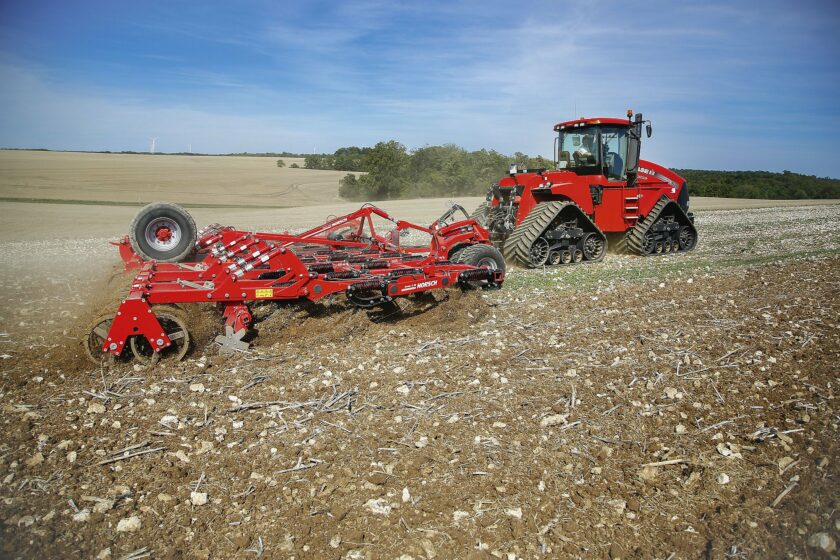
However, theory must be put into practice, and time plays a crucial role in this regard. Between the chopping of barley and triticale and the second sowing, the shortest time possible should pass, as the longer the maize and soybean cycle, the higher the yields at harvest. The same necessity will arise in October when fields need to be ready for the sowing of autumn-winter cereals. At least once a year, therefore, minimum tillage will allow switching from one crop to another in the shortest possible time while still incorporating crop residues and any organic matter into the soil. Among the solutions that Horsch offers in this regard is the “Terrano” series, mixed cultivators with tines and discs designed to refine the soil after plowing, working to depths of up to 25 centimeters, or to work shallowly in seedbeds between 10 and 15 centimeters, which is necessary to initiate second sowings without turning the soil over. The different working depths are all hydraulically adjustable via the terminal in the cab.
Impact without inversion
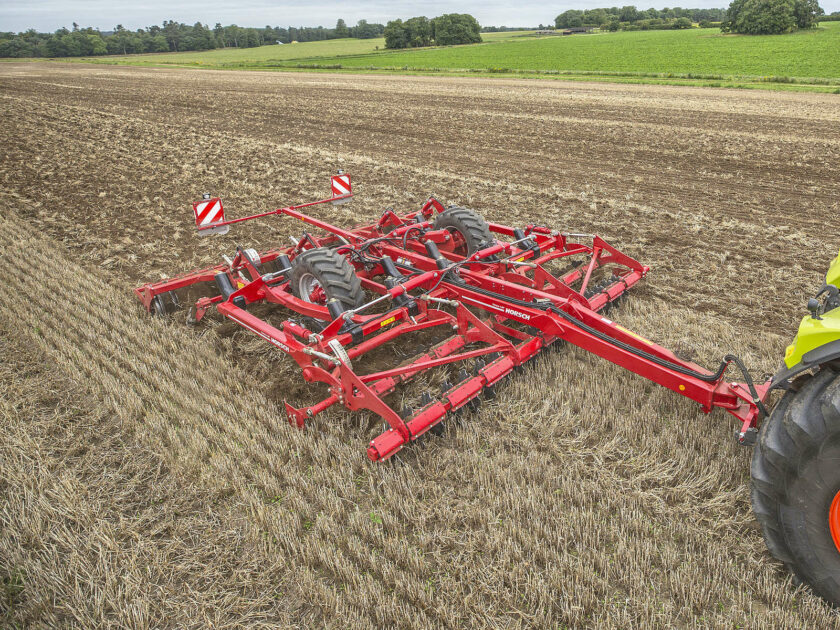
Characterized by high efficiency and operational speed, the “Terrano” models are available in four versions: “Fx,” “Gx,” “Fm,” and “Mt,” all equipped with robust tines capable of cutting through the soil without turning it over. These cultivators are therefore particularly recommended when refining the surface layer of the seedbed while incorporating crop residues, thanks to the discs, and at the same time creating vertical incisions along the profile to promote quick and uniform seed germination. Regarding working widths, the “Terrano” starts with fronts from three to five meters for the “Fx,” the only carried type in the series, then rising from 4.4 meters to 5.9 meters for the “Gx.” Similar widths, from four to six meters, are also available for the two versions of the “Mt,” which, unlike all other models in the “Terrano” series, begin the work with a first row of discs, finishing with a second row placed after the tines. Finally, there are seven versions of the “Fm” model, the flagship of the series, with working fronts ranging from a minimum of 4.8 meters to a maximum of 12.15 meters.
Horsch “Terrano” cultivators, steel frames and four rows of tines
Ideal for shallow and medium-depth work, the “Terrano Fm” features a frame on which four rows of tines are mounted, staggered to ensure a distance of 27 centimeters between the furrows. The action of the tines is complemented by the last row of working elements, the discs. The final leveling is then delegated to a closing packer available in different versions depending on the soil to be worked.
To each soil its own tool
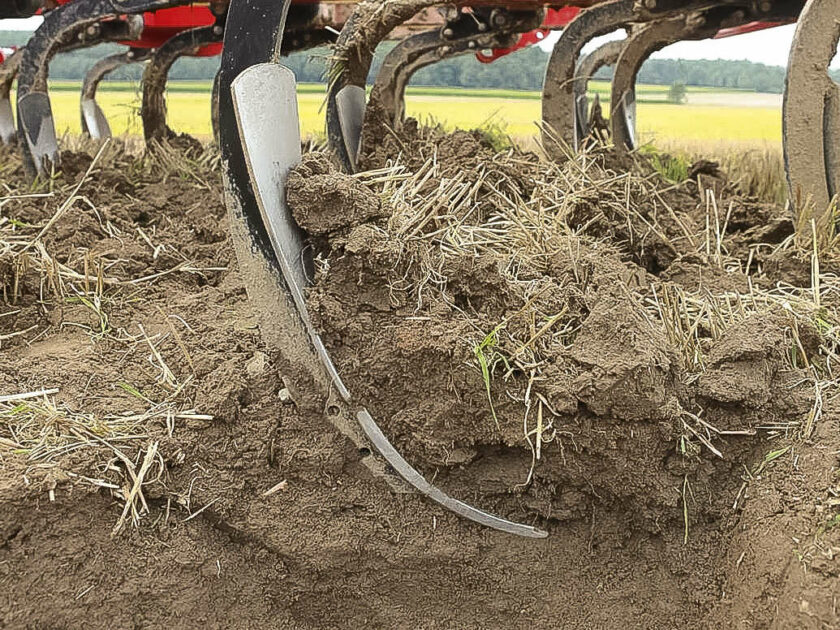
Given the extreme variability in soil textures, as well as the moisture conditions at the time of tillage, cultivators need to be equipped with different tools depending on the type of action required. Tines can have simple points, typical of harrows, or be fitted with side wings to cut the soil longitudinally as well as vertically. For more challenging soils, the tines can be reinforced with steel tips, while for deeper tillage, vertical coulters are available to cut through the entire soil profile. Packers can also vary, offering up to eight types with toothed or smooth discs, combinable with “Ringflex” rings, or available as single or double rollers, or in an open or cage type, the latter composed of ten longitudinal metal bars forming a spiral to better crush and refine the substrate. Optionally, a closing harrow is also available to achieve even finer refinement of the seedbed.
Title: Horsch “Terrano” cultivators, excellent when time is tight
Translation with ChatGPT





